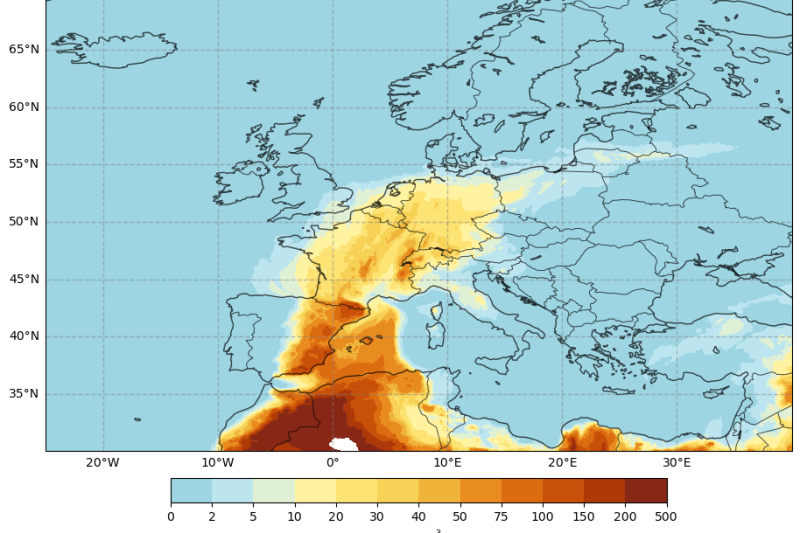Copernicus: Exceptional Saharan Dust Outbreak Adds to a Very Active Season
Particulate matter forecasts from the Copernicus Atmosphere Monitoring Service (CAMS) show large-scale Saharan dust transport across Europe. The latest episode, which has been underway since 6 April, has been leading to high PM10 concentrations at ground level for the Iberian Peninsula, and some parts of France and Germany. This event comes after a repeated series of Saharan dust episodes reaching Europe in recent weeks.
The Copernicus Atmosphere Monitoring Service (CAMS) is continuing to track a Saharan dust transport episode that started over the weekend. CAMS forecasts show that particulate matter concentrations (PM10) in several parts of Europe will increase due to the incoming dust. The dust plume has been travelling across most of the Iberian Peninsula to reach southeastern France, Germany and Scandinavia.
Daily maximum values of CAMS PM10 forecasts have been showing significant concentrations at surface level, and exceeding the EU 24-hour mean exposure threshold of 50 µg/m3 in some of the affected regions. As a result of this episode, there has been a degradation of the air quality in several countries. Moreover, hazy skies and deposits on surfaces including cars and windows can be attributed to this episode.
Mark Parrington, Senior Scientist at the Copernicus Atmosphere Monitoring Service, said: “This latest Saharan dust episode is the third of its kind in the last two weeks, and is related to the weather pattern that led to warmer weather across western Europe in recent days. The two previous episodes were mainly over the Mediterranean and southern Europe, although some effects such as deposition on people’s cars occurred as far north as Scandinavia last weekend. While it is not unusual for Saharan dust plumes to reach Europe, there has been an increase in the intensity and frequency of such episodes in recent years, which could be potentially attributed to changes in atmospheric circulation patterns.”
CAMS routinely monitors all stages of dust transportation from the Sahara Desert and has been providing updates on the severity of the episodes which have occurred so far this year. Additionally, CAMS offers continuous data and forecasts tracking long-range dust transportation, both in Europe and globally. The nearly real-time data and tools provided are free-to-use and serve as a tool to aid citizens, businesses, and policymakers in making informed decisions on an ongoing basis with 24/7 air quality forecast data.













